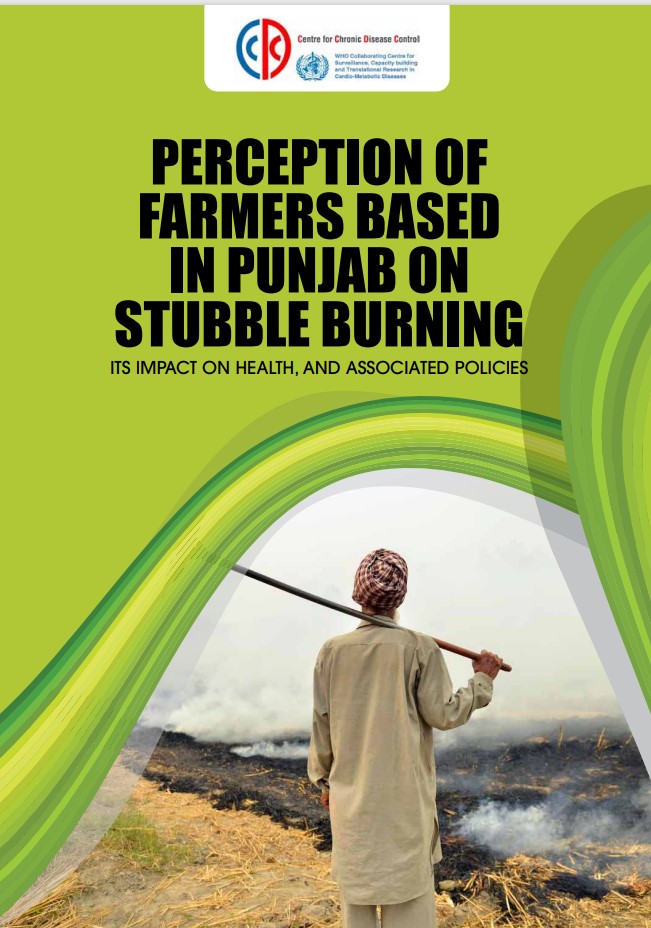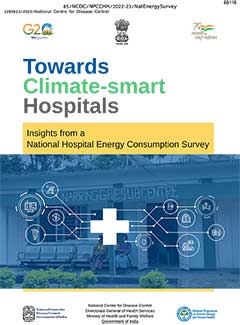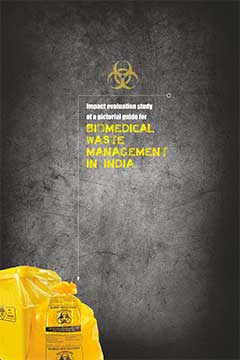Research Reports
Research by H.E.L.P
Stubble Burning in Punjab: Perception of Farmers based in Punjab on Stubble Burning
This study is a follow-up to the report “Stubble Burning in Punjab: Assessing the Gaps between Policy and Implementation” that Centre for Chronic Disease Control (CCDC) published, in 2021. Stubble burning is a threat to human health and environmental health. It is known to have negative effects on the respiratory and cardiovascular health of populations. It also pollutes air and deteriorates the quality of land. This study aims to understand the perspectives of farmers from Punjab on issues related to health and policies associated with stubble burning. The study was conducted in two districts of Punjab – Sangrur and Hoshiarpur, with a sample size of 230.
Mapping Energy Footprint of Indian Health Care System – The National Hospital Energy Consumption Survey
The National Hospital Energy Consumption Survey was conceptualized and conducted by the National Centre for Disease Control, Directorate General of Health Services, Ministry of Health and Family Welfare, Government of India under the aegis of the National Programme on Climate Change and Human Health (NPCCHH), with technical support from Alliance for an Energy Efficient Economy and Centre for Chronic Disease Control.
This report displays the potential to establish a preliminary understanding of Indian health sector’s energy consumption from both, a quantitative and qualitative perspective. It provides a first look at the energy footprint of the Indian health sector. Its results are based on the detailed survey of 600+ public and private hospitals of 10 typologies across 18 States/UTs and all 5 climate zones of India that it covered.
These findings provide insights that can be leveraged to strengthen public health care infrastructure, build climate resilience, enabling health care workforce and transitioning to renewable energy. Additionally, the findings on end-use interventions at all levels of healthcare provide a basis for further amplifying efforts in public and private hospitals. The key recommendations are as following:
- Track energy consumption in all healthcare facilities for managing energy cost and related emissions in hospitals
- Enhance energy efficiency in hospitals through Energy Service Companies (ESCOs)
- Mandate Energy Conservation Building Code (ECBC) norms for new construction and major renovation
- Mandate energy efficiency as an evaluation criterion in hospitals’ procurement policies for purchasing medical devices, appliances, and equipment
- Disclose and benchmark data for energy performance target setting
- Create an integrated approach to state-level energy transition (including energy efficiency and renewable energy) in hospitals
- Increase renewable energy deployment in public healthcare infrastructure through state government-led initiatives
- Ensure effective operations and maintenance of renewable energy systems
- Enhance awareness and build capacities of health sector actors for efficient and clean energy transition
- Leverage funding through global, national, and state-level funding mechanisms
Stubble Burning in Punjab: Assessing the Gaps between Policy and Implementation
India has a huge task ahead, as we face a dual challenge of curbing growing air pollution levels across the country as well as health impacts from poor air quality which is starting to affect many Indian states (Health Effects Institute, 2020). At present, stubble burning is blamed by many or perceived as one of the biggest reasons for hazardous air pollution levels in Delhi and in IGP. The practice of crop residue burning is prohibited by many state governments and the Supreme Court of India in 2019 (Khanna, 2020). The National Green Tribunal (NGT) also imposed fines in 2015 ranging between 2,500 INR to 15,000 INR on farmers to discourage them from burning paddy fields. Besides the fine, NGT has notified the state governments of Delhi, Rajasthan, Punjab, Haryana and Uttar Pradesh to update on the steps taken to check the harmful practice. But these ruling and fines have had a very little impact on the ground, with the practice still being widely followed for many reasons. The state and central governments have passed many policies in the last decade to aid farmers to move away from stubble burning. This presents an opportunity to investigate these policies and its effectiveness in one of the states – Punjab in north-western India which practices stubble burning in huge numbers.
Strengthening Pollution Control Boards to achieve the National Air Quality Standards in India
The study was undertaken to understand the institutional and informational barriers that are hampering the goal of achieving the NAAQS across the country. Primary research for this study was conducted in purposively selected sample cities – Lucknow, Patna, Ranchi, Raipur, Bhubaneswar, Vijayawada, Goa, and Mumbai – which were geographically distributed based on a few criteria. Series of key informant interviews were conducted to understand India’s roadmap to achieving the NAAQS and the barriers in attaining the same in an endeavour to strengthen India’s efforts to achieve the SDG target of reducing pollution related diseases by 50%.
Understanding Knowledge, Attitude and Practice of Health Practitioners Towards Health Effects of Air Pollution in India
This study aims to understand current knowledge, awareness, and perspectives amongst doctors about the prevalence of air pollution as a risk factor for health as well as the importance of effective communication and outreach to patients. A comprehensive qualitative study was conducted in selected settings to assess and bring forth gaps that exist between present knowledge about harmful impacts of air pollution on health and doctor’s awareness about it. Air pollution, as compared to an established risk factor like tobacco use and smoking for acute and chronic respiratory diseases, is still not adequately covered in medical education. The objective of this study was therefore to understand if and how the medical community perceives the issue of air pollution, whether it is perceived as a possible threat or risk factor for various health outcomes and why. The idea would also be to understand if doctors talk about air pollution as a potential risk factor with their patients, which specific cases do they do so in and if not, then why?
White Paper on Climate Change and Health: Role of Health Sector
This White Paper and report culminated from the proceedings of the ‘National Health Conclave 2019: Climate Change and Health – Role of the Health Sector’, held on 23rd of March, 2019 at Manekshaw Centre, New Delhi. Dedicated to the health impacts of climate change in India and appropriate risk mitigation and adaptation strategies, with specific focus on the health sector, the one-day conclave was organised in collaboration with the Association of Healthcare Providers India (AHPI) and CEH, a Centre of Excellence within PHFI. This White paper summarises the available evidence on these inter linkages between climate change, air pollution and its associated Health impacts and the critical role played by the health sector as a contributor as well as a first responder to climate change.
Impact evaluation study of a pictorial guide on biomedical waste management rules
The Pictorial Guide on Biomedical Waste Management (BMWM) Rules, 2016 (amended in 2018 & 2019), was released in 2020 to provide a quick, user-friendly view of the important elements of biomedical waste handling, treatment, and disposal. This report provides the findings of a study to evaluate the impacts that the pictorial guide has had on the knowledge, aitude, and practices of the study groups regarding biomedical waste management. It also highlights the key challenges faced by the healthcare workers while handling the COVID-19 associated biomedical waste.







